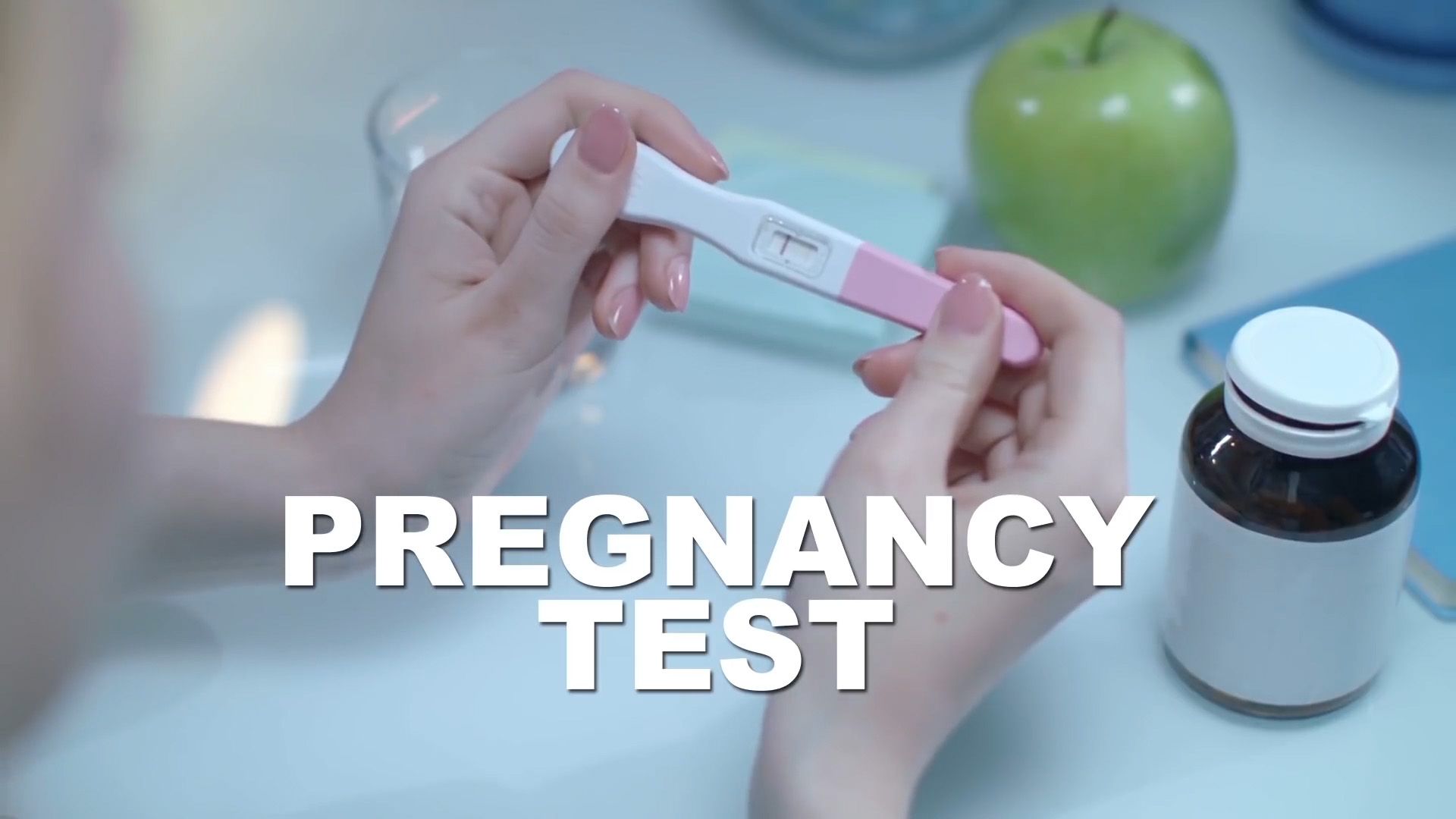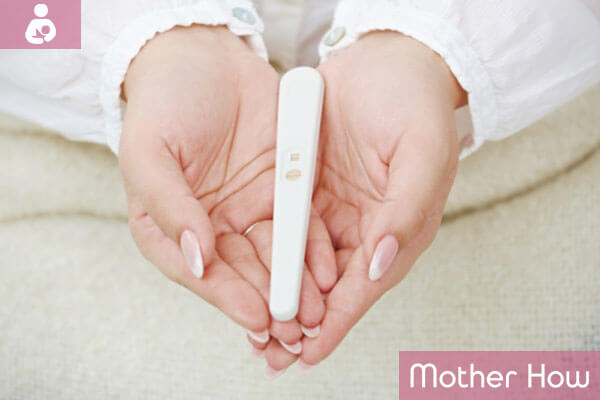If you believe you might be pregnant, taking a pregnancy test is a reliable way to confirm your suspicions. Pregnancy test kits are designed to detect the hormone human chorionic gonadotropin (hCG), which is produced shortly after a fertilized egg attaches to the lining of your uterus. The great news is that these kits are accessible, straightforward to use, and deliver quick results. This guide will walk you through everything you need to know about using these tests accurately, so you can get the answers you need with confidence.
Types of Pregnancy Test Kits Available

When it comes to pregnancy test kits, you'll find a variety of options on the market, each with its own set of features. Choosing the right one can make a significant difference in your testing experience. Here’s a breakdown of the main types of pregnancy test kits available:
- Urine Tests:
- Home Urine Tests: These are the most common types found in pharmacies. They come in the form of test strips, midstream tests, or cassette tests. Each type provides clear instructions and reliable results, making them perfect for home use.
- Digital Tests: A modern twist on home urine tests, these provide results in a clear digital format, often displaying phrases like “Pregnant” or “Not Pregnant.” This eliminates any guesswork regarding what the lines might mean.
- Blood Tests:
- Qualitative Tests: These tests tell you whether hCG is present but don’t measure the amount. They are usually conducted at a doctor's office and are highly accurate.
- Quantitative Tests: These tests measure the exact level of hCG in your blood and can confirm pregnancy earlier than urine tests. They are especially useful for monitoring hCG levels in early pregnancies or in cases of complications.
- Clearblue Tests: These are marketed as advanced tests that can tell you how far along you are in your pregnancy. They can indicate whether you are “1-2 weeks,” “2-3 weeks,” or “3+ weeks” pregnant, adding another layer of clarity to your results.
It’s essential to choose a test that fits your needs. For instance, if you prefer privacy and convenience, a home urine test might be the way to go. However, if you're looking for more precise results or if you suspect complications, a blood test may be more appropriate. Regardless of the type you choose, ensure you follow the instructions carefully for the most accurate results.
In summary, understanding the different types of pregnancy test kits available can help you make an informed choice. Whether opting for a simple home kit or a more detailed blood test, the key is knowing what to expect to alleviate any nervousness during this potentially life-changing moment. Next, let’s dive into how to use a pregnancy test kit correctly for the best outcomes!
Also Read This: How to Verify Your Facebook Account on Dailymotion
3. When to Take a Pregnancy Test

Knowing the right time to take a pregnancy test can significantly impact the accuracy of your results. So, when is the best time? Here’s the lowdown:
- Before Your Missed Period: Some tests are marketed as early testers, claiming they can detect pregnancy as early as a few days before your missed period. However, this may not give you the most reliable results. The closer you are to the day your period is due, the higher the chance of an accurate reading.
- After Your Missed Period: This is typically the recommended time to take a pregnancy test. Most tests suggest waiting at least one week after you expect your period. By this point, if you are pregnant, your hormone levels should be high enough to detect.
- First thing in the morning: If you can wait until the morning, you might get the best results. Your urine is usually more concentrated after a night’s sleep, which can make the pregnancy hormone (hCG) easier to detect.
It's important to note that the timing can vary based on individual factors, like:
- Irregular Periods: If you have irregular cycles, predicting your missed period can be tricky. If you suspect you might be pregnant, you can take a test about two weeks after you had unprotected intercourse.
- Hormonal Changes: Some health conditions can affect hormone levels, possibly leading to false readings. If you’ve undergone recent hormonal treatments, it might be best to consult with a healthcare professional before testing.
In summary, while it’s tempting to test as soon as you suspect pregnancy, following these guidelines can help ensure that you’re getting an accurate reading!
Also Read This: DIY Juda Hairstyles at Home – Watch Tutorials on Dailymotion
4. How to Prepare for the Test
Preparation can make all the difference when it comes to getting your results right. So, let’s dive into how you can prepare for taking a pregnancy test:
- Read the Instructions: Before you do anything else, make sure to read the instructions on the test kit. Each brand may have specific directions regarding timing and usage.
- Gather Your Supplies: Make sure you have all the necessary items handy:
- Pregnancy test kit
- Timer or clock (optional)
- A clean, flat surface to work on
- Consider Your Timing: As mentioned earlier, taking the test in the morning can yield more accurate results thanks to concentrated urine. If you’re testing later in the day, try to limit fluid intake beforehand to make sure your urine remains concentrated.
- Avoid Excessive Fluids: Staying hydrated is essential, but drinking a lot of water just before the test could dilute your urine and lead to a false negative.
- Be Mindful of Medications: Certain medications can impact test results. If you’re unsure, consult your healthcare provider to discuss any medications or supplements you may be taking.
Finally, don’t forget about your mental and emotional preparation. Taking a pregnancy test can be a highly charged experience, no matter the outcome. It can be helpful to have someone supportive around or to plan a comforting activity afterward, regardless of the results. Remember, this is just one step in your journey!
Also Read This: How Dailymotion Enhances Educational and Creative Video Experiences
5. Step-by-Step Instructions for Using a Pregnancy Test Kit
Using a pregnancy test kit is a straightforward process, but following the instructions closely is crucial to getting accurate results. Here’s a simple step-by-step guide that will help you through it:
- Gather Your Supplies: Before you start, make sure you have everything you need:
- A pregnancy test kit
- Timer or clock
- Clean, dry surface
- Privacy (if using in a public restroom)
- Check the Expiration Date: Always check the expiration date on the test box. Using an expired test can lead to incorrect results.
- Read the Instructions: Different brands may have slightly different procedures. Take a moment to read the instructions provided with your specific test. This ensures you understand how to properly use it.
- Collect Your Sample: Most tests require either urine or a blood sample. The most common method is urine. If using urine:
- For best results, use the first morning urine, as it contains the highest concentration of the pregnancy hormone (hCG).
- Urinate directly onto the test stick or into a clean cup, depending on the instructions.
- Insert the Test: If you’re using a test stick, you may either pee on it or dip it in the collected urine. Make sure to follow what your kit advises.
- Start the Timer: Once you’ve applied the sample, start your timer. Most tests require you to wait for 3-5 minutes. Avoid peeking too soon!
- Dispose of the Test: After the waiting period, dispose of the test according to the instructions. Some tests are designed to be reused for confirmation of results.
And there you go! Following these simple steps will help you use the pregnancy test kit correctly so you can get the most accurate results.
Also Read This: How to Make Crochet Shoes: Fun Step-by-Step Guide on Dailymotion
6. Reading and Interpreting Test Results
Now that you’ve completed the test, it’s time to read your results. But hang on; it’s essential to do this correctly. Here’s how to interpret what you see:
- Check the Control Line: Most pregnancy tests will have a control line (usually marked “C” or a similar indicator). This line shows that the test has functioned correctly. If this line doesn’t appear, your test might be faulty, so consider trying again with a new kit.
- Identify the Test Line: This line, often marked “T,” indicates the presence of the pregnancy hormone (hCG). Here’s what different results mean:
- No Line: If there’s no visible test line and the control line is present, it means you’re NOT pregnant.
- One Line: If you see only the control line, you’re likely NOT pregnant.
- Two Lines: If both the control line and test line are visible, congratulations! This generally indicates a positive result.
- Timing Matters: Make sure that you read the results within the time frame specified in the instructions. Reading it too late could lead to a false positive, as the test line may fade after the allotted time.
Lastly, if you have questions about the result or feel uncertain, it’s always a good idea to consult with a healthcare professional. They can provide the answers you need and confirm your pregnancy with a more sensitive test.
Understanding how to accurately read and interpret the results of your pregnancy test is empowering. With clarity comes confidence! Now, you're equipped to take this important step in your pregnancy journey.
Also Read This: How to Cook Haleem: Step-by-Step Guide for Beginners on Dailymotion
7. Common Questions and Myths About Pregnancy Testing
If you're a bit anxious about using a pregnancy test kit, you're not alone! There are many questions and misconceptions swirling around this topic. Let’s debunk some common myths and address frequently asked questions to help you feel more informed and confident about the process.
Myth 1: You should test as soon as you miss your period.
While it's common advice, testing too early may lead to inaccurate results. Most pregnancy tests are designed to detect the pregnancy hormone (hCG) in your urine, and it takes time for this hormone to build up after conception. For the most accurate results, aim to test at least a week after your missed period.
Myth 2: You can’t get accurate results with morning urine.
This is actually false! In fact, testing first thing in the morning when your urine is most concentrated can lead to more reliable results. If you're testing later in the day, make sure to limit fluids for a few hours beforehand to increase accuracy.
Question: How do I know which pregnancy test to choose?
Choosing a pregnancy test can feel overwhelming with so many options available, but don’t worry. Most over-the-counter tests are quite accurate, especially when used correctly. Look for tests that are FDA-approved, and consider ones that display results clearly. Some tests even have digital readouts that eliminate any guesswork!
Myth 3: BFN (Big Fat Negative) means I’m not pregnant.
A negative result can be disappointing, but it doesn’t always mean you’re not pregnant. If you test too early, the hormone levels might not be high enough to trigger a positive response. If your period doesn’t arrive within a few days, consider retesting or consulting your healthcare provider.
Question: Can medications affect the results?
Some medications, especially those containing hCG (like certain fertility treatments), can affect results and might give you a false positive. If you're on any medications and unsure, it's best to discuss concerns with your healthcare provider before testing.
Armed with this knowledge, you can approach your pregnancy test with a clearer mindset. Remember that if you're still feeling uncertain, talking to a medical professional is always a good idea!
Also Read This: Is WWE Fake or Real on Dailymotion? Understanding the Nature of Wrestling Content
8. What to Do After Taking the Test
So, you’ve taken the test and now you’re staring at the result. What next? How you handle the outcome is just as important as the process itself. Let’s talk about the steps you should take depending on what the test reveals.
If the test is positive:
- You should confirm your pregnancy with a healthcare professional. They can provide a blood test for accurate confirmation and start discussing next steps for your prenatal care.
- Take some time to process the news, whether it's a feeling of joy, surprise, or uncertainty. It’s normal to experience a range of emotions!
- Start thinking about your health. This includes considering prenatal vitamins, dietary adjustments, and potentially enrolling in an early pregnancy class.
If the test is negative:
- Don’t panic! If your period doesn’t arrive within a few days, you might want to take another test or consult with your healthcare provider for further guidance.
- Consider your cycle timing. If you often have irregular periods, keep track of your ovulation dates to better predict future phases of your menstrual cycle.
- If you were testing because of unusual symptoms, it’s best to reach out to a healthcare professional to explore what might be happening.
Regardless of the result, remember that you are not alone in this experience. Whether you're starting a new chapter in your life or navigating the uncertainties of reproductive health, support and resources are available to guide you along the way.
And always remember, your well-being matters! So take care of yourself, and don’t hesitate to seek help or advice whenever you need it.
Conclusion and Final Thoughts
Using a pregnancy test kit can be a straightforward and empowering experience. By following the instructions diligently, you increase the likelihood of getting accurate results. Here are some key takeaways to remember:
- Timing Matters: For the best accuracy, consider waiting until after your missed period.
- Follow Instructions: Each test may have slightly different instructions, so read them carefully.
- Check Expiration Dates: Ensure your test is not expired to avoid inaccurate results.
If you receive a positive result, it’s advisable to confirm with a healthcare professional for further guidance. Conversely, if you receive a negative result but still suspect you might be pregnant, testing again in a few days can provide additional clarity due to varying hormone levels.
Additional Tips:
| Action | When to Do It |
|---|---|
| Test First Morning Urine | Upon waking |
| Follow-Up Test | In 2-3 days if negative and no period |
| Consult a Doctor | For positive results |
In conclusion, while home pregnancy tests are a reliable first step, they should not replace professional medical advice. Taking the time to understand the process and remaining calm during this emotional period can aid in making informed decisions.
 admin
admin








